Latest update
- Two weanlings visit the National Ploughing Championships!
- Breeding and weight data
- Plans for achieving 0.6 kg ADG over the winter
Thirty one cows are due to calve from 27th January 2025, and this includes 10 heifers.
Two of Aonghusa’s weanlings travelled up to the National Ploughing Championships for a display on the Teagasc stand this year. They were on the demonstration ‘what is your target turnout weight?’.
The Charolais bullock was bred from CH4491 and was picked for his high commercial beef value index of €283. He was born on 26th February and weighed 365kg on 8th September, after gaining 1.55kg/day since birth. Aonghusa is expecting him to weigh 429kg at housing on 31st October and that he will be 493kg at turnout on 14th February 2025.
The Limousin heifer was bred by LM2014 and is 5 stars on the replacement index with a value of €147. However when you look into her indexes, she is low on milk at +2.7kg, but strong on carcass weight at 24.5kg. She was born on 9th February and weighed 290kg on 8th September, after gaining 1.13 kg/day since birth. Her target is to weigh 343kg at housing and to be 407 kg at turnout next spring.
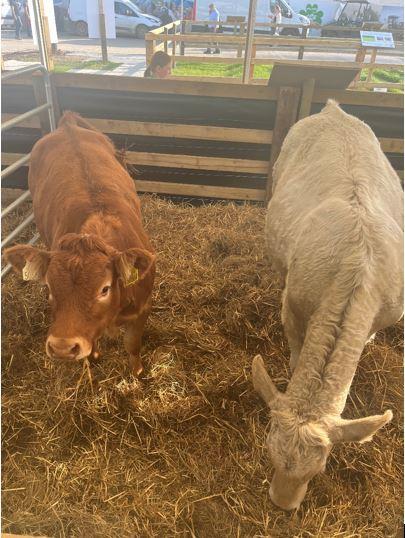
Figure 1: Heifer and bullock at the National Ploughing Championships 2024
Aonghusa plans to achieve an average daily gain of 0.6kg/day on the weanlings over the winter by;
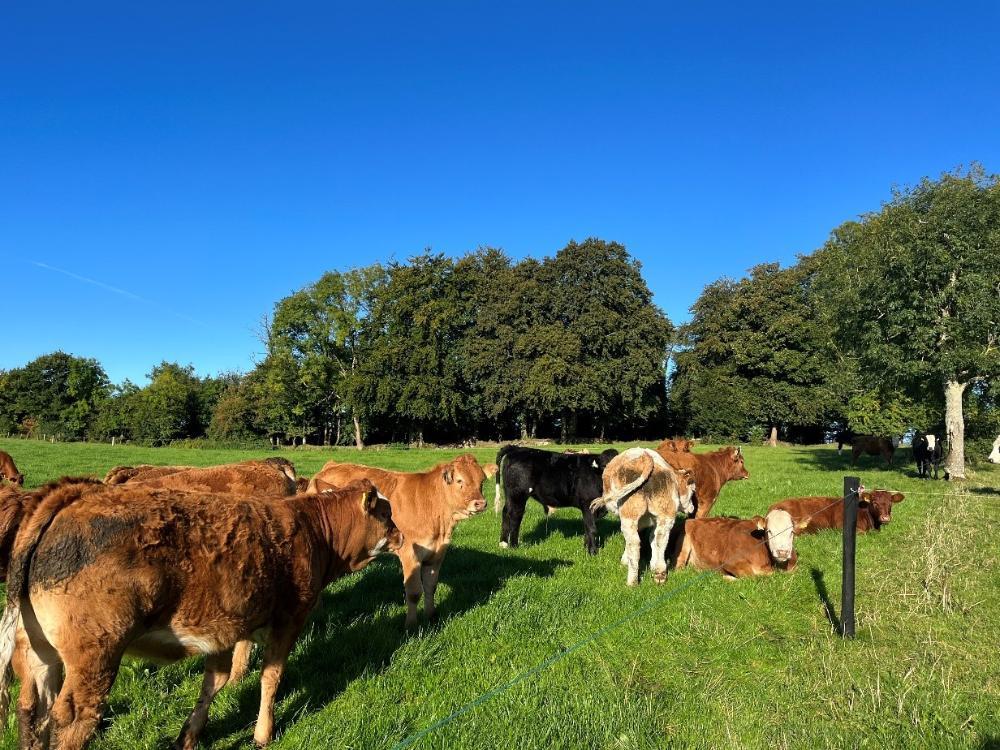
Figure 2: Weanlings at grass
Aonghusa was closing his farm in rotation and plans to have everything housed by the first week in November. However he noticed some strong re-growths on 6 paddocks that had an average cover of 1700 kg DM/ha.
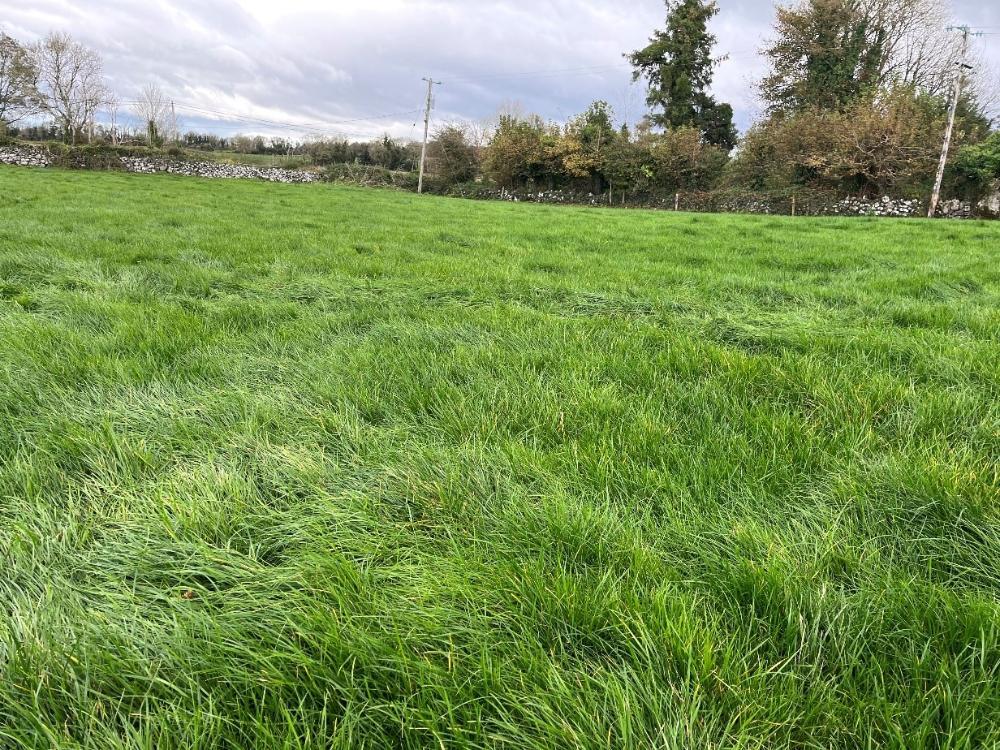
Figure 3: One of the heavy grass covers on the farm
Normally he would not graze these again but felt that the covers are too high to carry over winter, particularly as there is white clover in most of the paddocks, and the target would be to have covers of less than 1000 kg DM/ha. The clover needs light over winter or will die out so Aonghusa is going to graze them quickly with the weanlings, followed by the cows, to get good graze outs and so that they will move through the paddocks quickly while ground conditions are suitable.
At an average cover of 1700 kg DM/ha over 1.82 ha, it means that 3100 kg DM is available for grazing. Assuming that 18 cows at 700kg live weight and 37 weanlings at 300 kg live weight will consume 2% of their body weight in dry matter, they will have a daily demand of 474 kg DM/ha/day. When this is divided by 3100 kg DM (total feed available), it means that Aonghusa will have the paddocks grazed in 6.5 days which will fit in nicely with his planned housing date.
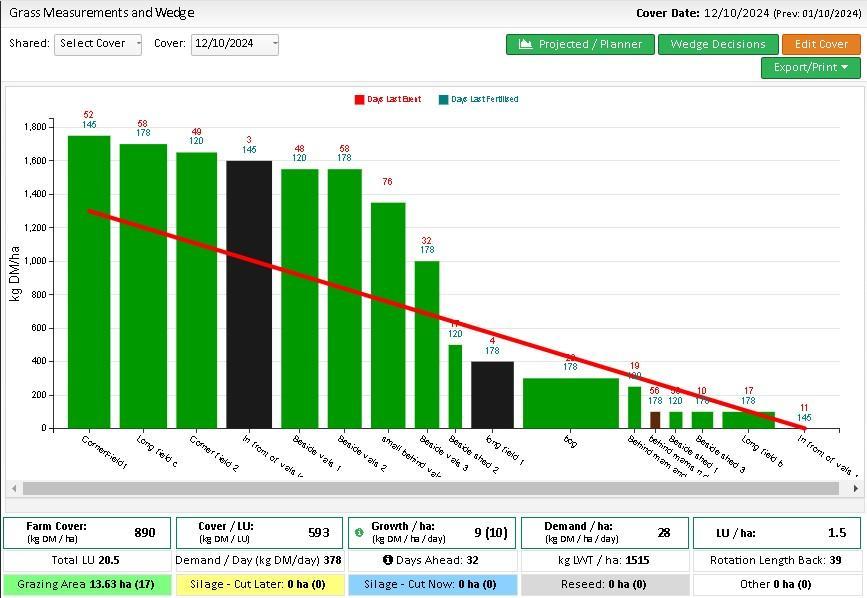
Figure 4: Grass wedge on 12th October 2024 shows strong grass covers
Two bullocks and 2 heifers were finished on 11th October. Two LMX bullocks averaged 374kg carcass weight under 30 months of age, one was an R grade and the other was a U. The 2 heifers averaged 355kg carcass weight and they were both U grades, meaning they all made over €2000 per head which Aonghusa was delighted with.
One more bullock and the vasectomised bull are now fit for sale. The remaining cull cows and the stock bulls will be fed for a further month. All are being fed 6kg of ration/head/day in two splits, along with 70% DMD silage.
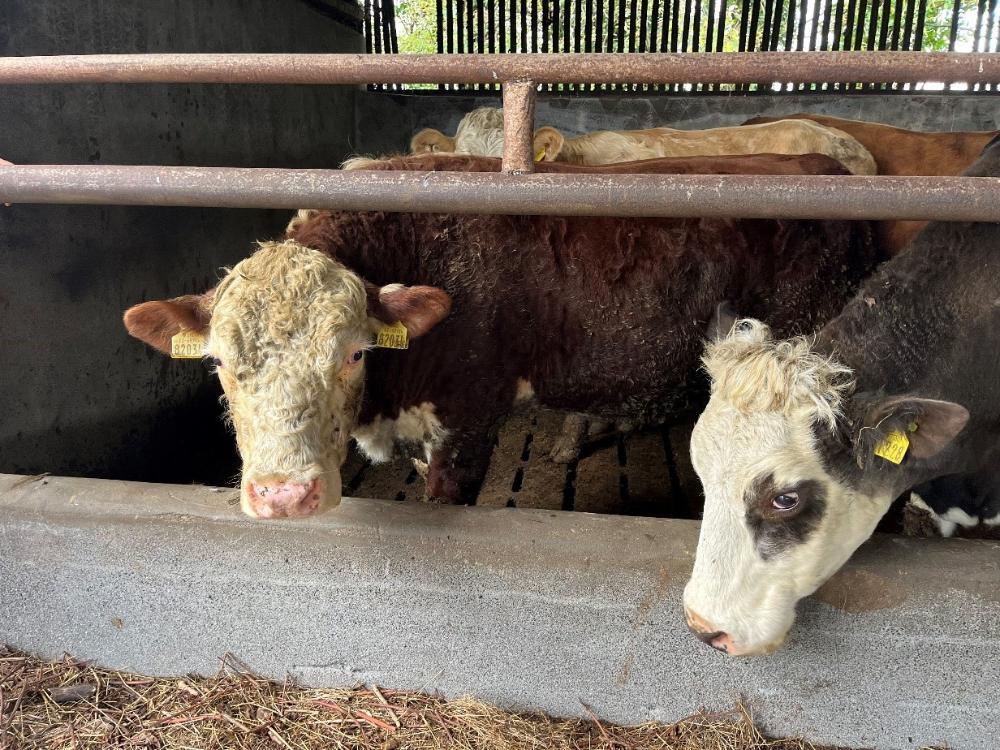
Figure 5: Vasectomised bull